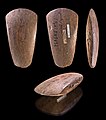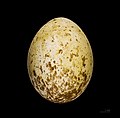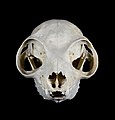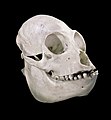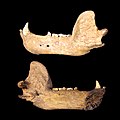Muséum de Toulouse
You can helpexpand this article with text translated fromthe corresponding articlein French.(May 2020)Click [show] for important translation instructions.
|
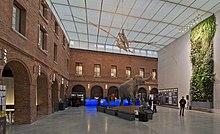

TheMuséum de Toulouse(Muséum d'Histoire Naturelle de la ville de Toulouse,MHNT) is a museum of natural history inToulouse,France.It is in the Busca-Montplaisir, houses a collection of more than 2.5 million items, and has some 3,000 square metres (32,000 sq ft) of exhibition space.[1]ItsIndex Herbariorumcode isTLM.[2]
History[edit]
The museum was founded in 1796 by the naturalistPhilippe-Isidore Picot de Lapeyrouse,with his collections being able to be housed (after the revolution) in the formerCarmelitemonastery in Toulouse.[3] In 1808, the emperorNapoleonformally gifted all the Carmelite buildings and land to the city of Toulouse,[3]and in 1865, the museum was opened to the public in its present location and under the directorship ofÉdouard Filhol.[3]Toulouse museum was the first museum in the world to open a gallery ofprehistorythanks to the collection of the malacologistAlfred de Candie de Saint-Simon[4](1731–1851), and the collaboration ofÉmile Cartailhac,Jean-Baptiste Noulet,andEugène Trutat.[5]
In 1887 (on the occasion of a world exposition in Toulouse), the botanical gardens of theUniversity of Toulousebecame part of the museum.[3] In 2008, the museum reopened in its present form (as of May 2018) with the renovations and extensions of the museum,[6]designed by the architectural firm ofJean-Paul Viguier,[3][7]having been completed.
Permanent exhibitions[edit]
The permanent exhibition has five linked themes:
- Sequence 1: Feeling the Earth's power.
Nature of theSolar Systemand its formation. Nature of the Earth –plate tectonics,seismicandvolcanicactivity and erosion,petrologyandmineralogy.
- Sequence 2: Doing away with our notions of hierarchy.
The nature of life –biodiversity,classification,andorganization.
- Sequence 3: Getting to grips with the hugescale.
Earth history from 3.8 billion years ago. Introduces time,palaeontologyand theevolutionof life
- Sequence 4: Admitting the obvious.
The main functions ofliving beings– feeding, respiration, locomotion, reproduction, protection and communication.
- Sequence 5: Inventing the future.
The impact of human activity –demographicpressure onecosystemsandnatural resources
Collections[edit]
This section presents examples to illustrate the content of each different collection of the Museum de Toulouse.
Prehistory[edit]
The prehistoric collection includes mostly artefacts excavated in France. They also contain comparative material from other parts of Europe and other continents. Notable collectors includeÉdouard Harlé(1850–1922),Antoine Meillet(1866–1936),Alexis Damour(1808–1902),Félix Regnault(1847–1908),Louis Péringuey(1855–1924),Émile Cartailhac(1845–1921), Daniel Bugnicourt,Edward John Dunn(1844–1937),Henri Breuil(1877–1961), andLouis Lartet(1840–1899), as well as the curatorsJean-Baptiste Noulet(1802–1890),Eugène Trutat(1840–1910), andÉdouard Filhol(1814–1883).
-
Mesolithictomb fromTéviec,Brittany
-
-
-
Bronze bead necklaceHoloceneBronze AgeJean-Baptiste Noulet collection
Botany[edit]
- Theherbariumcontains historic specimens collected byBenjamin Balansa(1825–1891).
-
Entada phaseoloides– fruit
-
Luffaaegyptiaca– fibrous skeleton
-
Cassia fistula– ripe fruit
Entomology[edit]
Coleoptera[edit]
-
Cerapteruspilipennis- Zambia
-
Chrysochroa rajahthailandica-Chiang Mai,Thailand
-
Hiperanthatestacea
Bupestrid from Colombia -
MetaxymorphagloriosaBupestrid from North Queensland, Australia
Lepidoptera[edit]
-
Charaxes varanesvologeses-Malawi
-
Morpho didius- Peru
-
Archaeopreponalicomedes-Brazil
Orthoptera[edit]
-
Oedipoda caerulescens- Etang de la Maourine Toulouse
-
Titanacris albipes- French Guiana
-
Porphyromma speciosa-French Guiana
Mineralogy[edit]
-
Celestine- Turkmenistan
-
Fluorite- France
-
Nepouite- New Caledonia
-
Scheelite- China
-
Sphalerite- Roumania
Ornithology[edit]
- Thebird collectionof MHNT contains more than 30,000 specimens, of which 20,000 are eggs. About 8,500 bird mounts and 1,500 scientific bird skins are included. Other bird items are around 2,000 skeletons and skulls and 5,300 eggs. The collection focuses on Europe (especially France), but the collection also has exotic species. Most are documented on card or computer systems.
- The bird mount collection ofVictor Besaucèle,with 5,000 specimens, is one of the most important historic collections in Europe.
- Other collectors represented are R. Bourret, G. Cossaune, M. Gourdon, Hammonville, A. Lacroix, and Reboussin.
-
Snowy owl:The oldest mount in the museum, collected by Mr Dode in 1807
- The egg collection ofJacques Perrin de Brichambaut(1920–2007) was acquired in 2010. It contains his personal collections, supplemented by those of other ornithologists, notablyGeorges Guichard,Henri Heim de Balsac,andRene de Naurois.It includes all thePalearcticspecies (Europe, North Africa, and Asia), about 1,000 species and nearly 15,000 eggs, and is one of the most complete and best-documented palearctic egg collections in Europe.
-
Egg ofwedge-tailed eagle
-
Egg oflittle egret
-
Egg ofhelmeted guineafowl
-
Egg ofsouthern giant petrel
-
Nest ofcommon house martin
-
Egg ofpassenger pigeon
Osteology[edit]
Paleontology[edit]
The specimens of the collection of paleontology amount to tens of thousands. They date from thePaleoarcheanto theEocene.
Invertebrates[edit]
The invertebrates room was named Saint-Simon in honor to the collection of themalacologistAlfred de Candie de Saint-Simon,presented during the museum opening exhibit in 1865, under the directorship ofÉdouard Filhol.
-
One of the oldest life forms, aStromatoliteofPaleoarcheanage – 3, 600 to 3, 200 million years ago (Mya)
-
TrilobiteofMiddle Ordovician– 468 to 460 Mya
Vertebrates[edit]
-
Woolly rhinoceroscomplete skeleton ofPleistoceneage – 370, 000 to 10, 000 years ago
-
Woolly rhinoceros, complete skull
-
Cave bearmandible of Pleistocene age

Henri Gaussen Botanical Garden[edit]
Henri Gaussenwas a Toulouse-based phytogeographer and botanist. Thebotanic gardenwhich honours his name is attached to the museum and is part of the Earth and Life Science Research and TrainingPaul Sabatier University.A second botanical area, The Museum Gardens, extends over 3 hectares. It is notable for "potagers du monde"(vegetable gardens of the world) and a" shade house "which recreates the conditions required by shade plants.
References[edit]
- ^Le Muséum de Toulouseon theofficial site of the tourism office of Toulouse
- ^"NYBG Steere Herbarium, Index Herbariorum: Muséum d'Histoire Naturelle de Toulouse".Retrieved30 May2018.
- ^abcde"Quelques dates de l'histoire du Muséum..."(in French). Muséum de Toulouse.Retrieved30 May2018.
- ^Camboulives, Roger (October 1977)."Excursion à Saint Simon au site de Candie".L'Auta(in French). No. 431. Toulouse, France. pp. 218–227.Retrieved12 September2020.
- ^Le Muséum de Toulouse et l'invention de la préhistoire,2010ISBN978-2-906702-18-9.
- ^"« Toulouse (Haute-Garonne), Muséum d'Histoire Naturelle: rapport de fouilles »".
- ^"Jean-Paul Viguier et Associés: Muséum de Toulouse".
External links[edit]
- Official website
 (in French)
(in French) - François Bon, Sébastien Dubois, Marie-Dominique Labails, 2010.Le Muséum de Toulouse et l'invention de la préhistoire ToulouseEditions Muséum de ToulouseISBN978-2-906702-18-9
- Part of this article is a translation of (or greatly inspired by) theFrench Wikipedia's article(see the list oftitle=Mus%C3%A9um_de_Toulouse&action=history authors)











